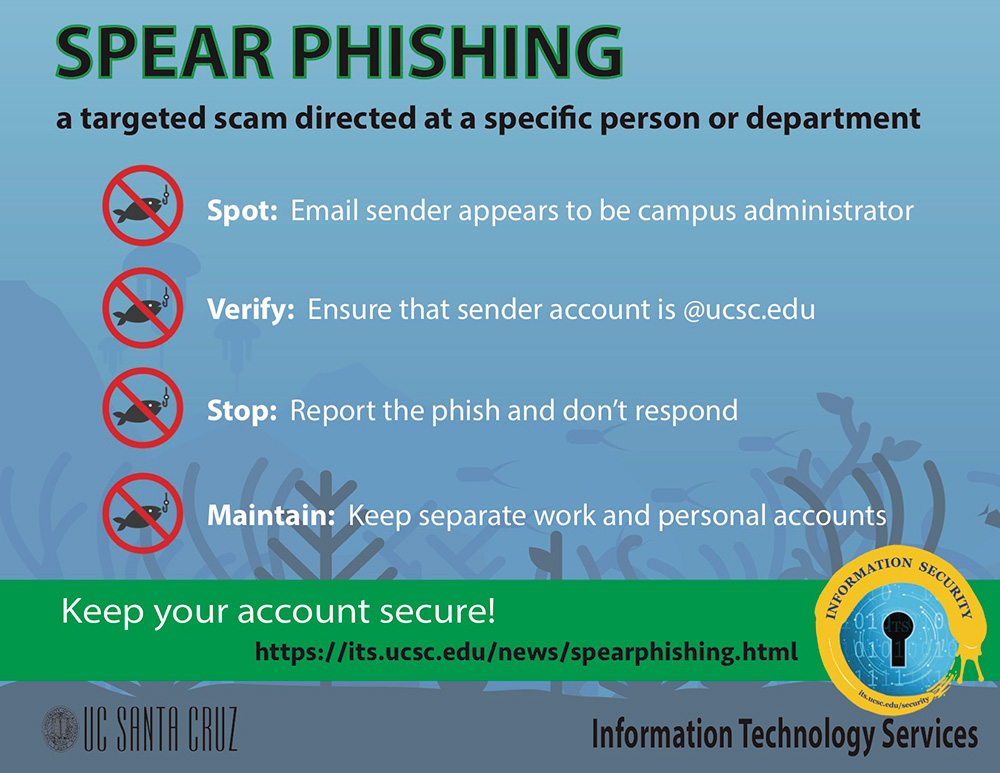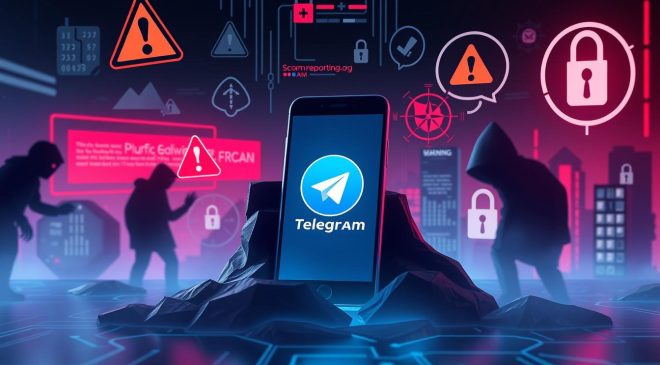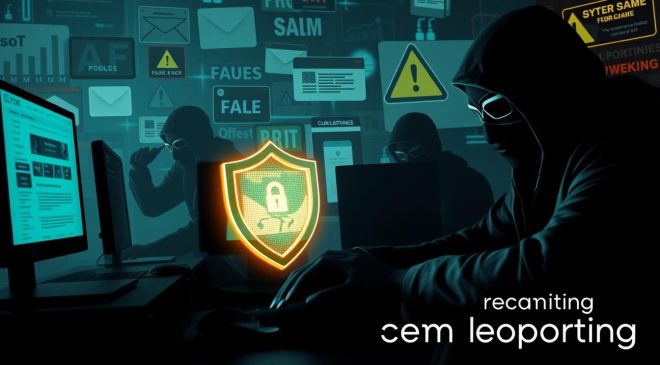
Introduction
When protecting yourself and your organization from cyber threats, spear phishing is one of the most significant dangers you need to be aware of. This targeted phishing attack can have devastating consequences if you fall victim to it. So, what can you do to protect against spear phishing? The key lies in cyber awareness.
Why spear phishing is a significant threat
Spear phishing attacks are highly personalized and specifically designed to deceive their targets. They involve sophisticated techniques like gathering personal information and impersonating trusted individuals or organizations. This makes it challenging to spot these attacks, even for those with experience in dealing with phishing attempts. Falling for a spear phishing attack can result in financial loss, data breaches, unauthorized access to sensitive information, and reputational damage.
The importance of cyber awareness in protection against spear phishing
Developing a strong culture of cyber awareness is crucial in defending against spear phishing attacks. Here are some key reasons why cyber awareness is essential for protection:
- Recognizing red flags: By educating yourself and your employees about the common signs of spear phishing attempts, you can become more vigilant when handling emails, messages, and phone calls. Look out for suspicious email addresses, unexpected attachment requests, and requests for sensitive information.
- Training and education: Regular training sessions can equip your team with the knowledge and skills to identify and respond appropriately to spear phishing attacks. This includes understanding the various tactics used by attackers and how to verify the authenticity of requests.
- Implementing security measures: Cyber awareness also involves implementing robust security measures, such as multi-factor authentication, encryption, and spam filters. These measures can help detect and prevent spear phishing attempts from reaching their targets.
- Reporting incidents: Encouraging a culture of reporting suspicious emails or incidents can help identify and mitigate potential attacks. Prompt reporting allows IT teams to take swift action and implement necessary measures to protect against spear phishing threats.
In conclusion, developing a strong sense of cyber awareness is vital in safeguarding yourself and your organization against spear phishing attacks. By staying informed, educating your team, implementing security measures, and promoting a culture of reporting, you can significantly reduce the risk of falling victim to these targeted attacks.

Understanding Spear Phishing
Definition and tactics of spear phishing
Spear phishing is a highly targeted cyber attack that aims to trick individuals into revealing sensitive information or performing actions that can be used for malicious purposes. Unlike traditional phishing attacks that cast a wide net, spear phishing attacks are tailored and personalized, making them more difficult to detect. Attackers carefully research their targets to craft convincing emails that appear legitimate and trustworthy.
There are several tactics used in spear phishing attacks:
- Email Spoofing: Attackers impersonate a trusted individual, such as a colleague or a senior executive, to deceive the target.
- Social Engineering: Attackers exploit human psychology and manipulate emotions to trick targets into revealing passwords, financial information, or other sensitive data.
- Malicious Links and Attachments: Spear phishing emails often contain links or attachments that, when clicked or opened, install malware or redirect the target to a fake website designed to collect their credentials.
Common targets and motives of spear phishing attacks
While anyone can be a target of spear phishing, some individuals and organizations are more frequently targeted due to the potential value of their information. Common targets include:
- High-Level Executives: Attackers target top-level executives with access to sensitive company data or can authorize financial transactions.
- Employees with Financial Information: Finance department employees or individuals with access to bank accounts and financial systems are targeted to gain access to funds.
- Government Officials: Politicians, bureaucrats, and military personnel are targeted for sensitive information or to gain influence.
- IT Administrators: Individuals responsible for network security and data protection are targeted to gain unauthorized access to systems.
Understanding the tactics and motives behind spear phishing attacks is crucial for protecting yourself and your organization. Implementing robust cybersecurity measures and fostering a culture of cyber awareness can help mitigate the risk and ensure that you are well-prepared to defend against these sophisticated attacks.
The Role of Cyber Awareness
Importance of cyber awareness in spear phishing prevention
As a responsible individual or employee, it is essential to understand the importance of cyber awareness in protecting yourself and your organization from spear phishing attacks. Spear phishing is a targeted form of phishing where cybercriminals trick individuals into revealing sensitive information or performing malicious actions through deceptive emails or messages.
By being cyber-aware, you can:
- Identify suspicious emails: Cyber awareness training teaches you to recognize the common signs of a spear phishing email, such as poor grammar, unexpected attachments, or suspicious requests for personal information.
- Exercise caution with links: Cyber awareness programs emphasize the importance of not clicking on links from untrusted sources. Instead, you should hover over the link to check its destination before proceeding.
- Verify sender information: By being aware of the dangers of spoofing, you can pay attention to sender email addresses and verify their authenticity. This helps you identify potential spear phishing attempts.
Training and education for recognizing and responding to spear phishing attempts
Investing in training and education on spear phishing awareness is crucial in equipping individuals with the knowledge and skills to protect themselves and their organizations. Some key aspects of this training include:
- Simulation exercises: Simulating real-world spear phishing scenarios helps individuals recognize the strategies used and trains them to respond appropriately, such as reporting suspicious emails to the IT department.
- Regular updates: Cyber threats constantly evolve, so ongoing education and awareness initiatives ensure that individuals stay up-to-date with the latest phishing techniques and can adapt their defenses accordingly.
- Creating a culture of cyber awareness: Organizations should foster a culture where cybersecurity is everyone’s responsibility. Encouraging employees to report potential phishing attempts and providing channels for reporting adds an additional layer of protection.
Remember, cyber awareness is a continuous effort and requires everyone’s participation. By staying vigilant and educated, you can play a crucial role in preventing spear phishing attacks and maintaining a secure digital environment.
Best Practices for Cyber Awareness
Creating strong passwords and practicing good password hygiene
Protecting yourself from spear phishing attacks starts with securing your passwords. Here are some tips for creating strong passwords and practicing good password hygiene:
- Create complex passwords: Use a combination of uppercase and lowercase letters, numbers, and special characters. Avoid using easily guessable information like your name or birthdate.
- Use unique passwords for each account: Using the same password across multiple accounts increases the risk of a data breach compromising all your accounts. Consider using a password manager to help you remember and secure your passwords.
- Regularly change your passwords: Set a reminder to change your passwords every few months to ensure ongoing security.
Identifying suspicious emails and avoiding clicking on malicious links
Spear phishing attacks often start with a deceptive email. To protect yourself, follow these tips:
- Trust your instincts: Be wary of emails from unknown senders or those that seem too good to be true. Look for red flags like poor grammar, spelling mistakes, or personal or financial information requests.
- Verify the sender: Check the email address to ensure it matches the legitimate source. Hover over links to see the actual URL before clicking on them.
- Think before you click: Avoid clicking suspicious links or opening attachments from unknown sources. Contact the sender directly to confirm the email’s authenticity when in doubt.
Implementing multi-factor authentication for added security
Multi-factor authentication adds an extra layer of security to your accounts. Here’s how to implement it:
- Enable multi-factor authentication: Many online services offer this feature. Enable it for your accounts to require an additional form of verification, such as a unique code sent to your phone, along with your password.
- Use authenticator apps: Consider using authenticator apps like Google Authenticator or Microsoft Authenticator, which generate one-time passwords for added security.
- Review your security settings regularly: Check your account settings to ensure that multi-factor authentication is still enabled and that no unauthorized changes have been made.
By following these best practices for cyber awareness, you can help protect yourself from spear phishing attacks and safeguard your sensitive information. Stay vigilant and always prioritize your online security.
Phishing Simulations and Testing
Protecting yourself and your organization from spear phishing attacks requires a proactive approach, and one effective method is through regular phishing simulations and tests.
Conducting regular phishing simulations and tests
By simulating real-life phishing attacks, you can assess your organization’s vulnerability to spear phishing and identify areas for improvement. These simulations involve sending mock phishing emails to employees and tracking how they respond.
It helps raise awareness of the tactics used by cybercriminals and educates employees on how to recognize and avoid falling for phishing scams.
Employees who fall for a phishing email during these simulations are redirected to a training module that provides immediate feedback and guidance. This allows them to understand the red flags to watch for and learn from their mistakes.
Regular phishing tests help identify weaknesses and create a culture of cyber awareness within the organization, making it more resilient to spear phishing attacks.
Measuring and improving cyber awareness through training programs
Implementing ongoing cyber awareness training programs is crucial in mitigating the risks posed by spear phishing. These training programs should cover topics such as identifying phishing emails, distinguishing between legitimate and suspicious websites, and recognizing other common tactics employed by cybercriminals.
It is essential to track and measure the effectiveness of these training programs to identify areas that require improvement. Regular assessments and quizzes can help gauge the level of cyber awareness within your organization and highlight any knowledge gaps. Addressing these gaps and continuously reinforcing cyber awareness can enhance the overall security posture and decrease the likelihood of falling victim to spear phishing attacks.
In summary, protecting yourself and your organization from spear phishing requires a combination of regular phishing simulations and tests, along with comprehensive cyber awareness training programs. Investing in these proactive measures can significantly reduce the risk and strengthen your defense against this prevalent cyber attack.
Security Tools and Technologies
Cyber awareness is crucial when it comes to protecting yourself from the dangers of spear phishing. By being knowledgeable and proactive, you can significantly reduce the risk of falling victim to these targeted attacks. Here are some essential security tools and technologies that can help you stay safe:
Anti-phishing software and email filters
Investing in reliable anti-phishing software and email filters is a smart move. These tools are designed to detect and block suspicious emails, flagging them as potential phishing attempts. They analyze the email’s content, attachments, and sender information to identify red flags or malicious intent.
Using these tools, you can significantly reduce the number of phishing emails that make it to your inbox, protecting you from potential threats.
Phishing URL scanners and link analysis tools
One common tactic used by attackers is disguising malicious links within seemingly harmless emails. Clicking on these links can lead you to fake websites that aim to steal your sensitive information. You can use phishing URL scanners and link analysis tools to avoid this.
These tools can identify and analyze suspicious links, checking their reputation and authenticity. They will alert you if a link is unsafe, ensuring you don’t fall into the trap.
It’s important to remember that although these security tools and technologies are beneficial, they are not foolproof. Cybercriminals are constantly evolving their strategies, making it essential for individuals to stay vigilant and educated.
Combining these tools with good cyber hygiene practices, such as not clicking on suspicious links and being cautious when sharing personal information online, can enhance your protection against spear phishing attacks. Stay informed and be proactive, as cyber awareness is your first line of defense.
Employee Accountability and Reporting
Encouraging employees to report suspicious emails and incidents
When it comes to protecting your organization from spear phishing attacks, employee awareness and accountability are crucial. Employees are often the primary targets of these attacks, so it is essential to empower them to identify and report suspicious emails or incidents.
- Training and Education: Provide regular training sessions to educate employees about spear phishing and the tactics used by cybercriminals. Make sure they understand the importance of reporting any suspicious emails, even if they are unsure. Encourage them to ask questions and seek assistance when in doubt.
- Promote a Culture of Reporting: Create a culture where reporting suspicious emails or incidents is encouraged and rewarded. Reinforce the message that everyone is responsible for protecting the organization from cyber threats. Implement a reporting system or platform that allows employees to report incidents anonymously if desired.
- Establish Clear Reporting Procedures: Clearly communicate the steps employees should follow when reporting suspicious emails or incidents. Provide them with dedicated channels, such as a designated email address or a cybersecurity hotline, to report such incidents.
Implementing incident response protocols and procedures
Having incident response protocols and procedures in place is crucial for effectively handling and mitigating the impact of spear phishing attacks. Here are some key steps to consider:
- Response Plan: Develop a comprehensive incident response plan outlining the steps to be taken in a spear phishing attack. This plan should include roles, responsibilities, communication channels, and escalation protocols.
- Investigation and Remediation: Establish a process for investigating and verifying suspected spear phishing incidents. This may involve engaging internal or external cybersecurity experts to assess the situation and determine the appropriate response.
- Communication: Define how and when to communicate the incident to relevant stakeholders, including employees, customers, partners, and law enforcement, if necessary. Clear communication is essential for managing the impact and ensuring transparency.
You can significantly enhance your organization’s protection against spear phishing attacks by prioritizing employee accountability and reporting and implementing incident response protocols. Remember, cybersecurity is a shared responsibility; every employee plays a crucial role in safeguarding the organization’s sensitive information and data.
Ongoing Updates and Adaptation
Staying updated on emerging spear phishing techniques
To protect yourself from spear phishing attacks, it’s crucial to stay informed about the latest tactics used by cybercriminals. Spear phishing techniques constantly evolve, and staying up-to-date on these emerging threats can help you identify and mitigate potential risks.
Keep an eye on cybersecurity news, blogs, and forums to learn about new phishing methods. Regularly educate yourself about the latest scams, social engineering techniques, and vulnerabilities attackers may exploit. By understanding the evolving landscape of spear phishing, you can better protect yourself and your organization.
Continuously improving cyber awareness training and protocols
Investing in regular cyber awareness training for yourself and your employees is paramount in the fight against spear phishing. Organizations should establish robust cybersecurity protocols and provide employees with the necessary knowledge and tools to effectively identify and respond to phishing attempts.
Develop and implement strong password policies, email security measures, and multifactor authentication systems to enhance your defenses against spear phishing attacks. Train your employees to recognize common red flags, such as suspicious email addresses, urgent or out-of-context requests, and unfamiliar attachments or links.
Additionally, conduct simulated phishing exercises to test the effectiveness of your training programs and raise awareness among employees. Regularly review and update your cybersecurity policies and procedures to align with current best practices.
By remaining vigilant, staying informed about emerging threats, and continuously improving your cyber awareness training and protocols, you can significantly reduce the risk of falling victim to spear phishing attacks. Remember, protecting yourself is a collective effort that requires ongoing education and adaptation to stay one step ahead of cybercriminals.
Case Studies and Examples
Real-life examples of spear phishing attacks and their consequences
As a professional who wants to protect yourself and your organization from spear phishing attacks, it’s important to understand the impact they can have. By examining real-life examples, you can gain valuable insights into the potential consequences of falling victim to these attacks.
One prominent example is the 2016 spear phishing attack on the Democratic National Committee (DNC). Russian hackers utilized a spear phishing email to trick DNC staff members into disclosing their login credentials. This breach led to the release of sensitive information, including emails and confidential documents, which significantly impacted the 2016 U.S. Presidential election.
Another example is the 2014 spear phishing attack on Sony Pictures Entertainment. Hackers sent emails disguised as legitimate messages to Sony employees, convincing them to click on malicious links or download attachments. This attack resulted in massive data breaches, the leak of unreleased movies, and significant reputational damage to the company.
These examples highlight the potential consequences of spear phishing attacks, including unauthorized access to sensitive data, financial losses, reputation damage, and legal implications. To protect yourself and your organization from such attacks, developing a strong cyber awareness is crucial.
The importance of cyber awareness
- Recognizing red flags: Cyber awareness enhances your ability to recognize the warning signs of a spear phishing attack, such as suspicious email addresses, unusual requests, and grammatical errors.
- Avoiding clicking on suspicious links and downloading attachments: Cyber awareness helps you understand the importance of refraining from clicking on links or downloading attachments from untrusted sources, as they may contain malware or be a part of a phishing scheme.
- Regular training and education: Ongoing training and education programs can empower individuals and organizations with the knowledge and skills to detect and prevent spear phishing attacks.
By prioritizing cyber awareness and implementing the necessary preventive measures, you can significantly reduce the risk of falling victim to spear phishing attacks and safeguard yourself and your organization from potential harm.
Conclusion
The importance of cyber awareness in protecting against spear phishing
Protecting yourself and your organization from spear phishing attacks requires a proactive approach, and one of the most effective measures is cyber awareness. You can significantly reduce the risk by educating individuals and organizations about the tactics employed by cybercriminals and the potential consequences of falling victim to a spear phishing attack.
Key takeaways and action points for individuals and organizations
- Stay informed: Regularly educate yourself and your employees on the latest phishing techniques and cybersecurity best practices. Stay updated with the latest phishing trends and learn how to recognize suspicious emails, links, and attachments.
- Be cautious: Always exercise caution when interacting with emails or messages, especially if they include requests for sensitive information or seem too good to be true. Verify the sender’s identity, double-check URLs, and think twice before clicking on any links or providing personal information.
- Implement strong security measures: Ensure that your organization has robust security measures in place, such as spam filters, firewalls, antivirus software, and two-factor authentication. Regularly update and patch software and systems to protect against known vulnerabilities.
- Monitor accounts: Regularly monitor your financial, email, and other online accounts for any suspicious activity. Report any unauthorized transactions or changes immediately.
- Report incidents: If you or your organization fall victim to a spear phishing attack, report the incident to the relevant authorities, such as your IT department, local law enforcement, or a dedicated cybersecurity hotline. This can help prevent further damage and potentially aid in investigating the attack.
By implementing these proactive measures and fostering a culture of cyber awareness, you can significantly reduce the risk of falling victim to spear phishing attacks and protect yourself and your organization from potential harm.


